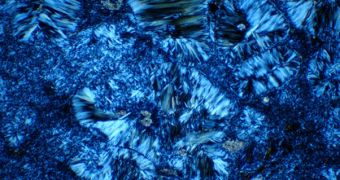If the newest research by Stanford University investigators is correct, then primitive life may have only arisen on early Earth during a rather brief geological time. The most recent study the team conducted on the origins of life on this planet revealed that it came very close to not emerging at all.
According to other investigations, a major shift in our planet's ability to support life was recorded between 4.5 billion years ago, where Earth was a ball of molten lava, and about 3.8 billion years ago, when it was teeming with microorganisms.
Therefore, a long series of fortuitous events must have occurred in the mean time, including the emergence of the first organisms, and their migration throughout the planet. Even interdisciplinary teams of scientists cannot figure out how this happened, or when.
Thanks to the new research, the Stanford team is now closer than ever to solving this riddle. The study provides additional evidence to support a theory which suggests that life first appeared above serpentinite rocks on the ocean floors.
What's more, the study determined that the necessary conditions to favor the development of early life were only available for a few million years, leaving early lifeforms with only a very narrow window of opportunity to gain a foothold in the environment.
Details of the proposed explanation appear in this week's issue of the esteemed journal Philosophical Transactions of the Royal Society B. The Stanford team was led by geophysics professor Norm Sleep, geological and environmental sciences professor Dennis Bird, and former graduate student Emily Pope.
The reason why the greenish-colored serpentinite is so important is because its underwater variety tends to form hydrothermal vents, spots on the planetary crust through which hot gases whirl out of the magma in Earth's mantle.
Stanford investigators say that chemicals spewing out of the vents can produce microscopic pore space in the stone making up the structure. These tiny spaces would have then been filled with a variety of chemicals, promoting the build-up of RNA from naturally-occurring components.
In order for this theory to hold, experts say, a cool Earth, serpentinite rocks, and an acidic ocean must have existed simultaneously. Even so, there is no way of actually telling whether this study provides the evidences we seek about the origin of life.

 14 DAY TRIAL //
14 DAY TRIAL //